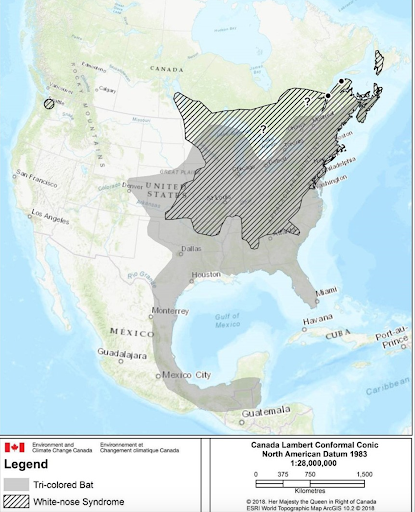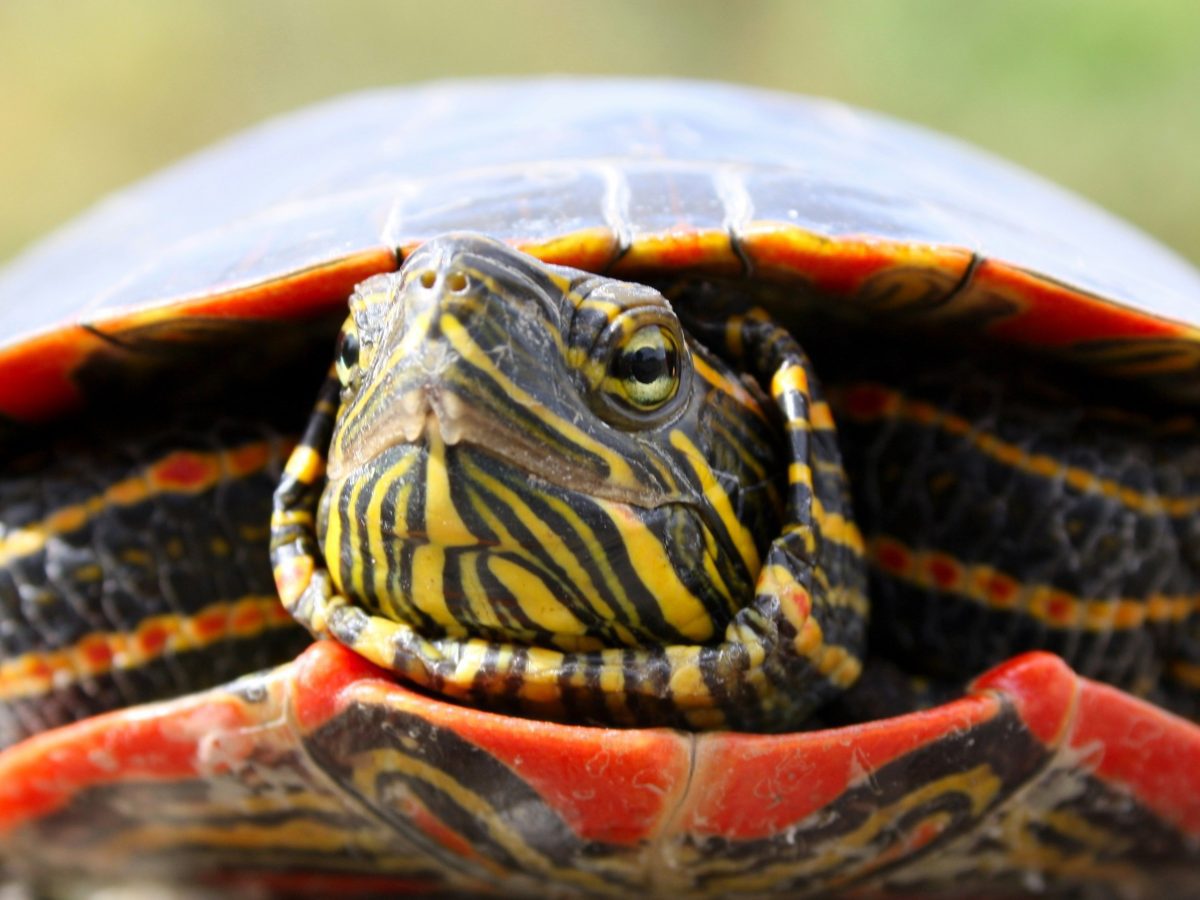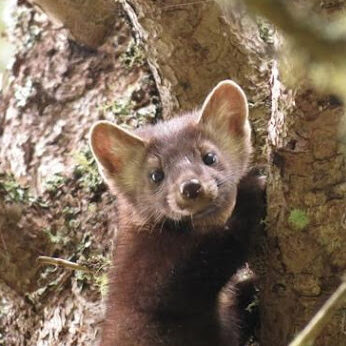
Species Identification:
The Tri-coloured Bat is a small bat species, with a wingspan of 23 cm and 5 to 9 grams in weight. They are reddish-brown to yellowish-brown in colour, with brown ears and face, orange-red arms, and dark brown wings. This bat is named for the hairs on its back which are black at the base, yellow in the middle, and brown at the tip, giving it a tri-coloured look. The Tri-coloured Bat used to be called the Eastern Pipistrelle.
Diet:
Tri-coloured Bats- like most bats, feed using echolocation primarily at dusk, and then again a few hours before dawn. They eat flying insects including moths, beetles, mosquitoes, wasps, and flies. They are also known to even eat spiders directly off of their webs. The Tri-coloured Bat most often feeds over ponds and rivers that are near forested areas. Under optimal feeding conditions, males can eat half their body weight or more in insects each night, and pregnant/nursing females can eat their entire body weight or more!
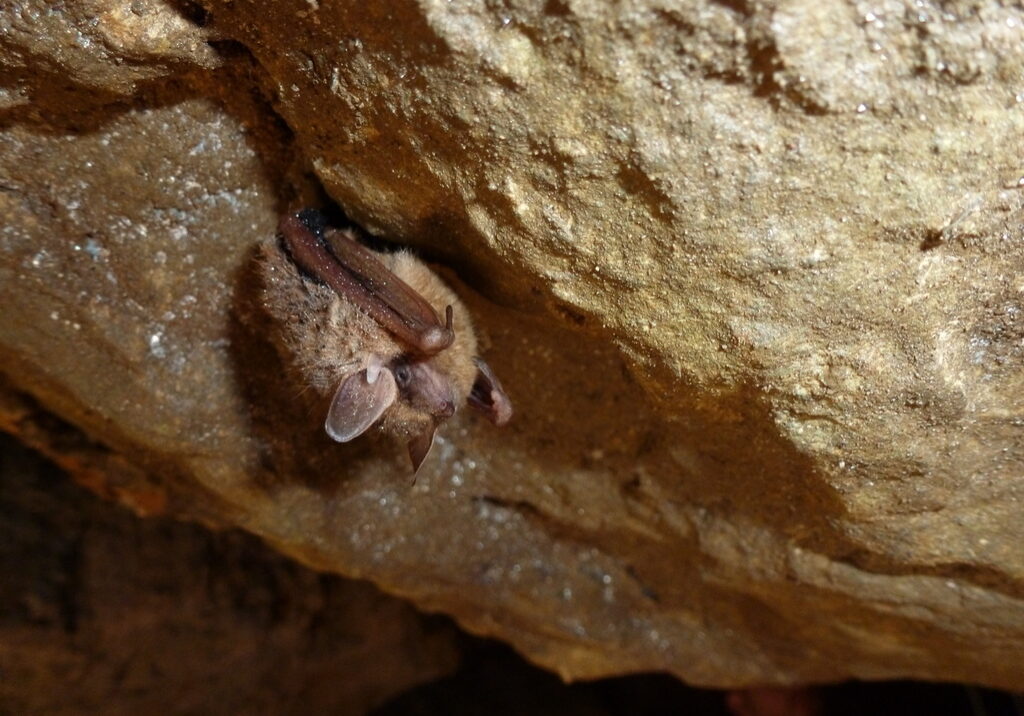
Biology and Behaviour:
Tri-coloured Bats are the first to enter hibernation and the last to leave, which generally occurs in early to mid-spring. They feed at night on spiders and insects; rest (roost) during the day. Tri-coloured Bats prefer to either roost alone or in small colonies in foliage or tree cavities. In more fragmented habitat areas, they may roost in abandoned human-made structures or barns.
Female Tri-coloured Bats will gather together in small groups during pup rearing, where they will give birth to 1-2 pups per year. Mating season occurs in mid-fall before hibernation. They will then migrate distances ranging from 53 to 780 km between their summer and hibernating locations. At their hibernation sites, Tri-coloured Bats tend to swarm in large numbers at the entrances before heading in for hibernation. Bats may swarm to mate, socialize, or to assess the suitability of a potential overwintering location. They hibernate from late fall to early spring in caves where conditions are humid (greater than 80%) and where the temperature remains above freezing (2 to 10 Celsius). The Tri-coloured Bat has very strict hibernation requirements and typically hibernates individually in the deepest, most temporally-stable parts of a cave, on the warmest walls available Where their habitat ranges overlap, the Little Brown Bat, Northern Myotis, and Tri-coloured Bat can be found hibernating in the same structures.

Similar Species:
Since most Ontario bat species are the same size and are generally spotted from far away, they can be difficult to distinguish. However, the Tri-coloured Bat has lighter fur and arms compared to the Northern Myotis and the Little Brown Bat.
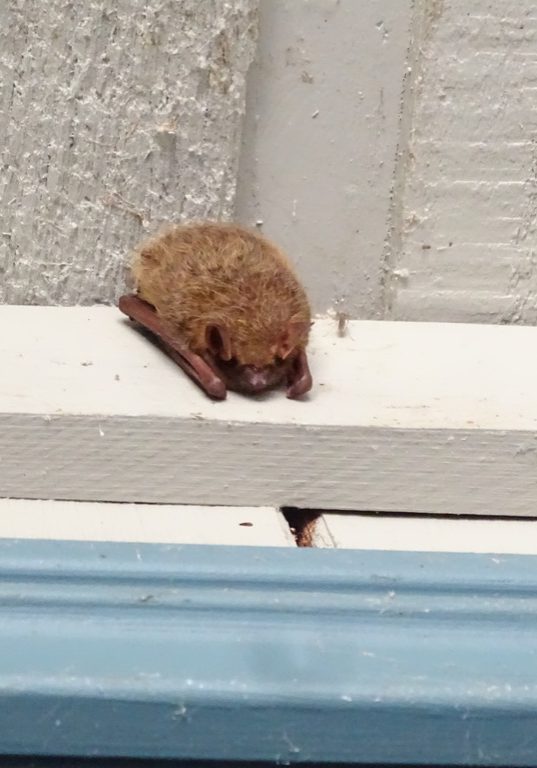
Conservation and recovery strategies:
White Nose Syndrome (WNS): Research into the causes, as well as potential treatments and mitigation measures for WNS is underway in Ontario and across North America. A White-nose Syndrome Response Plan has been developed by the Ontario Ministry of Natural Resources and Forestry that outlines the government’s plan to detect, research and mitigate the disease
Wind turbines: Some wind farms have been making adjustments to their turbines that minimize their impact to bats at times when the risk to bats is particularly high, such as at night during peak migration. These changes include periodic shutdowns of the turbines, increasing the minimum wind speed required to make the turbine blades turn, and arranging the blades to be more parallel with airflow, minimizing the change in air pressure behind the turbines. These measures have been found to significantly reduce bat mortality (60 to 70%), with only marginal losses (1%) of power.
General: Several North America-wide bat monitoring programs and organizations have been created. These organizations are gathering data and information on remaining bat populations so that effective conservation decisions can be made.
Additional Resources:
- Georgian Bay Biosphere’s Tri-coloured Bat page
- Nature Conservancy Canada: Tri-coloured Bat
- Government of Ontario’s Tri-coloured Bat information page
Sources:
Government of Ontario. 2021. Little Brown Myotis, Northern Myotis and Tri-colored Bat recovery strategy. Retrieved from: https://www.ontario.ca/page/little-brown-myotis-northern-myotis-and-tri-colored-bat-recovery-strategy#section-7
Government of Ontario. 2021. Tri-coloured Bat, Retrieved from: https://www.ontario.ca/page/tri-colored-ba
COSEWIC. 2012. Tri-colored bat (Perimyotis subflavus): technical summary and supporting information 2012. Committee on the Status of Endangered Wildlife in Canada. Retrieved from: https://www.canada.ca/en/environment-climate-change/services/species-risk-public-registry/cosewic-assessments/tri-colored-bat-technical-summary-2012.html



